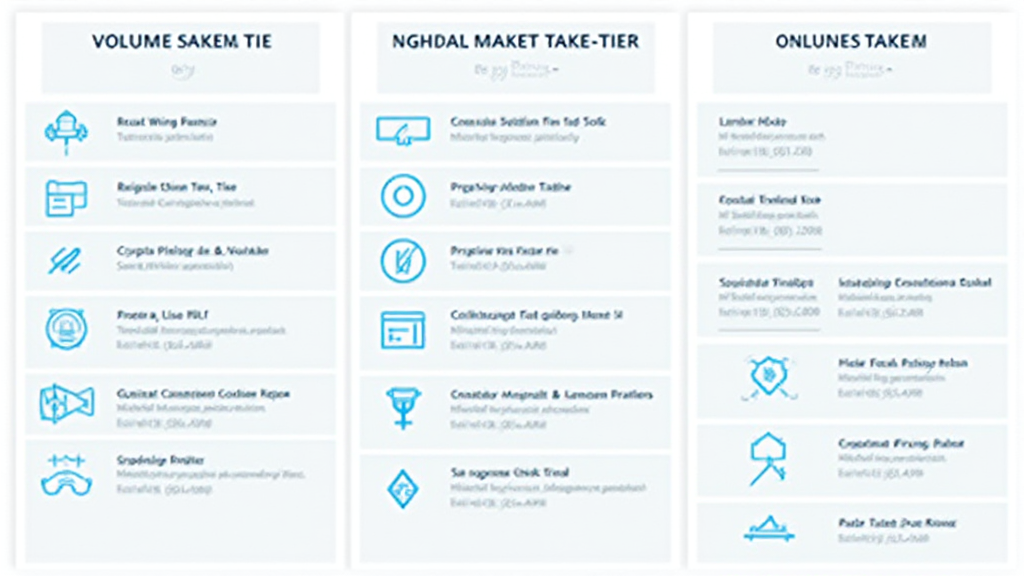Understanding HIBT Vietnam Maker-Taker Fee Tier
In a rapidly evolving digital landscape, understanding the intricacies of trading fees is crucial for every crypto trader. With approximately 61% of Vietnamese users participating in the crypto market as reported by hibt.com, it’s essential to grasp the maker-taker fee tier system that can significantly influence your trading experience. In this article, we’ll break down what maker-taker fees are, how they function in HIBT Vietnam, and why they are pivotal for your trading strategy.
What Are Maker and Taker Fees?
Before jumping into the specifics of the HIBT Vietnam maker-taker fee tier, let’s define what maker and taker fees are. In trading, a maker is someone who provides liquidity to the market, typically by placing a limit order that isn’t immediately filled. A taker, on the other hand, is someone who removes liquidity from the market by placing a market order that matches existing orders.
- Maker Fees: Typically lower than taker fees because they encourage liquidity.
- Taker Fees: Generally higher as they take liquidity from the market.
The Importance of Fee Structures
Fee structures play a pivotal role in your trading profitability. Higher fees can eat into your returns, making it crucial to understand the fee tier your platform adopts. On platforms like ccoinshop, knowing the specifics about HIBT Vietnam’s fee tiers can lead to more strategic trading decisions.

Analysis of HIBT Vietnam’s Fee Tiers
HIBT Vietnam employs a multi-tier fee structure for both makers and takers based on trading volume. As trading volume increases, the fees can significantly decrease, benefiting active traders. Here’s a quick breakdown:
- Volume Tier 1: 0 – 1 BTC traded, Maker Fee: 0.2%, Taker Fee: 0.3%
- Volume Tier 2: 1 – 10 BTC traded, Maker Fee: 0.15%, Taker Fee: 0.25%
- Volume Tier 3: Over 10 BTC traded, Maker Fee: 0.1%, Taker Fee: 0.2%
This progressive model encourages high transaction volumes, which aligns with the interests of the platform and its users.
Understanding Fee Impact with Real Data
To contextualize these fees, let’s consider an example of trading on HIBT Vietnam. Suppose you are a trader who executes a market order for 2 BTC.
Assuming you are in Volume Tier 2:
- Taker Fee = 0.25% of 2 BTC = 0.005 BTC (about $250)
- Maker Fee for the next order = 0.15% of 2 BTC = 0.003 BTC (about $150)
As you can see, understanding these fee structures can save you a significant amount over time.
Enhancing Trading Strategies Using Fees
Using the knowledge of maker-taker fees, you can create a robust trading strategy. Here are a few approaches:
- Limit Orders: If you know maker fees are lower, consider using limit orders to increase your chances of benefiting from lower costs.
- Timed Trading: Plan trades during times of less volatility, which may often correlate with higher liquidity periods.
Implementing these practices effectively on platforms such as ccoinshop can also enhance your profit margins.
Exploiting Local Market Trends
The Vietnamese crypto market is experiencing significant growth, with user adoption increasing year over year. As of 2023, the number of crypto users in Vietnam grew by approximately 26% compared to the previous year. This growth represents an opportunity for traders to engage with a larger audience and leverage market demands.
In conclusion, as a trader in Vietnam that’s using HIBT, being knowledgeable about maker-taker fee tiers can substantially impact your overall trading experience and outcomes.
Conclusion
In summary, understanding the HIBT Vietnam maker-taker fee tier is essential for anyone looking to navigate the crypto landscape efficiently. As we’ve seen, the structure of these fees not only influences your trading costs but also provides insights into market liquidity and behavior. By making informed decisions based on this fee structure, you can maximize your trading benefits on platforms like ccoinshop.
To maintain compliance with regulations and ensure a safe trading environment, always consult local regulators for guidance on your trading activities. Remember, these insights are not financial advice but rather a way to educate yourself about the opportunities existing in the HIBT system.
Author: Dr. Alex Johnson, a renowned blockchain expert with over 15 publications in the field and leading security audits for well-known crypto projects.




